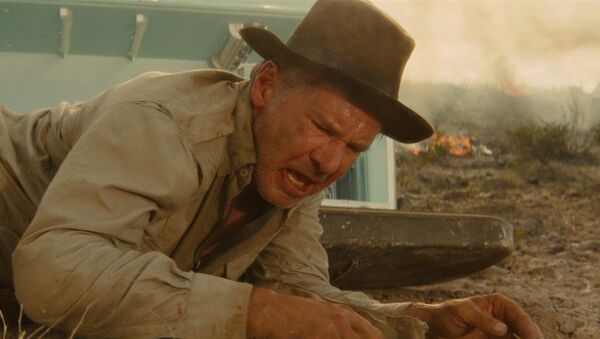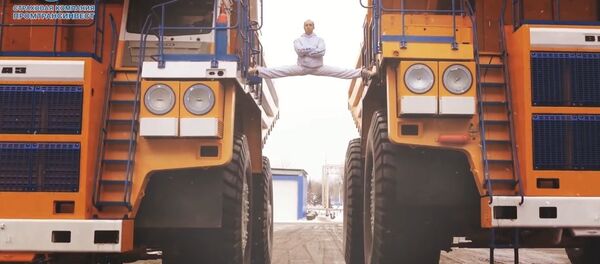Fans of the Indiana Jones franchise got a rude shock back in 2008 when they saw their beloved hero survive a massive nuclear explosion by hiding in a lead-lined fridge, which was catapulted out of the test range to safety. This and other incredibly unrealistic scenes contributed to the film's poor reviews from fans and critics alike, with Crystal Skull remaining by far the lowest-rated film in the Indiana Jones franchise on IMDB.
Now, physicists at the University of Leicester have confirmed, scientifically, that even if Indy had somehow survived the force of the blast and the fridge's launch into the desert, he would have definitely died from the gamma ray radiation fallout immediately following the nuclear explosion, 50s refrigerator lead lining technology notwithstanding.
According to calculations in a paper in the undergraduate physics research Journal of Physics Special Topics by T. Mansfield et al., for Indy to have actually survived the radiation, the thickness of the lead which lined the refrigerator would have had to have been between 4.58 cm and 6.83 cm, something that just wasn't common for lead-lined commercial appliances in the 1950s. The lead on most refrigerators of the day was no more than a couple millimeters thick.
To be certain, researchers even used three different actual nuclear bomb tests that took place in 1957, the year the film was set, as part Operation Plumbbob. The maximum power of the explosions was equivalent to 74 kilotons of TNT, about five times that of the bomb dropped on Hiroshima.
In any case, the physicists concluded, "all aspects considered," Indiana Jones "would have almost certainly been killed by being caught up within the blast of the bomb, with the fridge being subject to an enormous amount of force." In proper academic form, the paper concluded that this too "could be further investigated."





